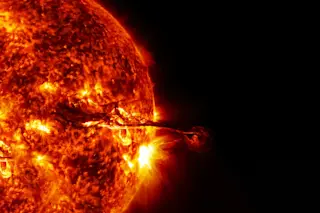Most tropical lightning storms are akin to massive pots of boiling water — but emitting bursts of gamma radiation instead of steam, according to reports in Nature. Those bursts also occur more frequently and in more forms than previously thought.
Scientists first detected high-energy gamma-ray bursts in Earth’s atmosphere in the 1990s. NASA launched satellites to see high-energy particles from objects in space, like supernovas. The satellites caught signs of the radioactive supercharged particles and linked them to thunderstorms. But they weren’t sure of the phenomenon’s frequency.
To find out — and to learn more about the physics behind the bursts — scientists equipped a U2 spy plane with gamma-ray detectors. The plane flew ten missions over large thunderstorms in the tropics south of Florida. And they saw much more gamma-ray bursts than expected.
Steve Cummer, an engineering professor at Duke University and an author of two papers describing the ...














